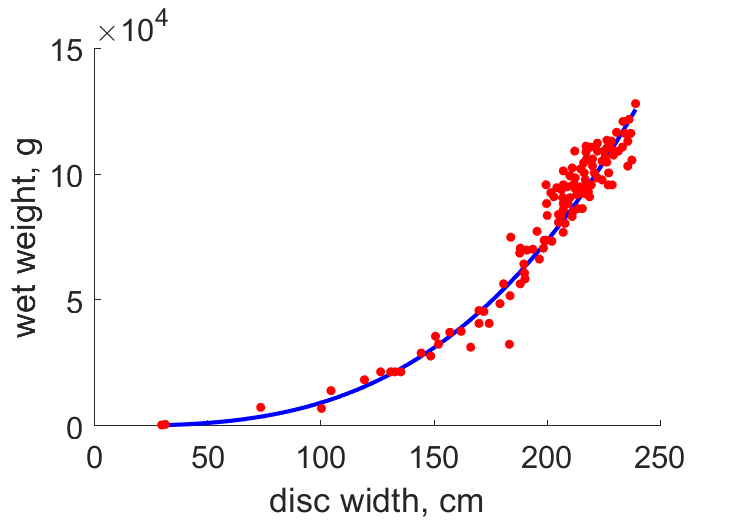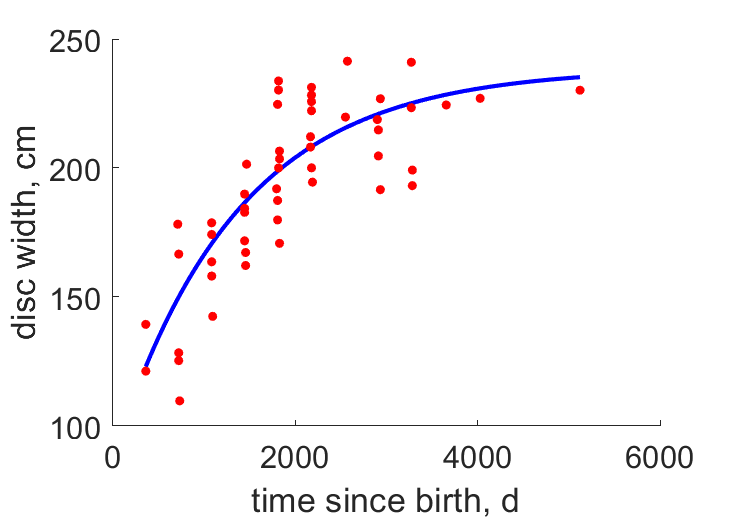Predictions & Data for this entry
| Model: std | climate: MA, MB | migrate: | phylum: |
| COMPLETE = 2.5 | ecozone: MC | food: biPz | class: |
| MRE = 0.080 | habitat: 0iMpe | gender: D | order: |
| SMSE = 0.010 | embryo: Mv | reprod: O | family: |
Zero-variate data
| Data | Observed | Predicted | (RE) | Unit | Description | Reference |
|---|---|---|---|---|---|---|
| ab | 365 | 443.7 | (0.2156) | d | age at birth | RambLamo2018 |
| am | 6205 | 6182 | (0.003675) | d | life span | PardKind2016 |
| Lb | 100 | 88.22 | (0.1178) | cm | total length at birth | RambLamo2018 |
| Lp | 218 | 239.2 | (0.09722) | cm | disc width at puberty | RambLamo2018 |
| Li | 310 | 291.3 | (0.06025) | cm | ultimate disc width | fishbase |
| Ri | 0.0008219 | 0.0008301 | (0.009951) | #/d | maximum reprod rate | RambLamo2018 |
Uni- and bivariate data
| Data | Figure | Independent variable | Dependent variable | (RE) | Reference |
|---|---|---|---|---|---|
| LWw |  | disc width | wet weight | (0.08041) | RambLamo2018 |
| tL |  | time since birth | disc width | (0.07532) | PardKind2016 |
Pseudo-data at Tref = 20°C
| Data | Generalised animal | Mobula japanica | Unit | Description |
|---|---|---|---|---|
| v | 0.02 | 0.04003 | cm/d | energy conductance |
| kap | 0.8 | 0.967 | - | allocation fraction to soma |
| kap_R | 0.95 | 0.95 | - | reproduction efficiency |
| p_M | 18 | 28.65 | J/d.cm^3 | vol-spec som maint |
| k_J | 0.002 | 0.002 | 1/d | maturity maint rate coefficient |
| kap_G | 0.8 | 0.8031 | - | growth efficiency |
Discussion
- The cost for milk secretion is added to the investment from the reproduction buffer.
- Temperatures are guessed
Facts
- At first, they are enclosed in an egg case while the developing embryos feed on the yolk. After the egg hatches, the pup remains in the oviduct and receives nourishment from a milky secretion (Ref: Wiki)
Bibliography